771 Naval Air Squadron
| 771 Naval Air Squadron | |
|---|---|
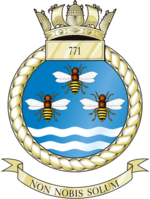 | |
| Active |
1939–1955 1961–1964 1967–2016 |
| Country |
|
| Branch | Fleet Air Arm of the Royal Navy |
| Role |
Search and Rescue Training |
| Garrison/HQ | RNAS Culdrose |
| Motto(s) |
"Non Nobis Solum" (Latin: "Not unto us alone") |
| Equipment | Sea King HAR.5 |
771 Naval Air Squadron of the Fleet Air Arm was formed on 24 May 1939 at Lee-on-Solent as a Fleet Requirements Unit with 14 Fairey Swordfish TSR biplanes. The Squadron carried out various exercises with ships and provided towed targets for naval air gunners and was decommissioned on 22 March 2016.

Second World War
The Squadron initially had a northern element (X Flight), and a southern element (Y Flight). 'X' Flight broke away on 28 September 1939 to become 772 Naval Air Squadron. The reshaped 771 NAS was based at RNAS Hatston flying a variety of fixed-wing aircraft, ranging from Supermarine Walruses to Hawker Hurricanes, from airfields across the UK and abroad.
A notable point in 771s wartime history was that they started the chain that led to the sinking of the German battleship Bismarck. The Commanding Officer of HMS Sparrowhawk, Capt Henry Lockhart St John Fancourt, RN, had been ordered to identify and sink the Bismarck at the earliest opportunity. The two squadrons of Albacore TSRs he had did not have sufficient range to attack the battleship whilst in harbour. He was relying on the Royal Air Force to carry out flights over Bergen, and inform the Royal Navy when the Battleship had left port. On 22 May 1941 RAF Coastal Command deemed the weather unsuitable for flight; however, Capt Fancourt, RN volunteered to put together a crew to fly 771s Martin Maryland twin engined plane to carry out the sortie. Temporary Lieutenant (A) Noel Ernest Goddard, RNVR, at the time the Senior Pilot of 771 NAS, volunteered to pilot the sortie, with his crew of Acting Leading Airman John Walker Armstrong as TAG-WO, and Leading Airman J. D. Milne as TAG-AG. The extremely experienced observer Commander Geoffry Alexander Rotherham, at the time the Air Stations XO, stepped up to act as Mission Commander. Goddard flew on instruments at low level over the sea, making landfall on target. Having identified that the ships had sailed already they attempted to radio their discovery back to RAF Coastal Command. However, they did not receive any reply. Rotherham decided to contact the Air Station directly on the Towed Target frequency and also fly directly to HMS Sparrowhawk's forward airfield, Sumburgh, where the Albacores were ready to intercept. Acting on Rotherhams's radio message, the Home Fleet were set to sea and engage the Bismarck and her escorts intercepting her at the Battle of the Denmark Straits. On 16 September 1941 The London Gazette reported the awarding of the following honours: Rotherham received the DSO,[1] Goddard the DSC,[2] and Armstrong the DSM.[2] Goddard went on to Command 771 NAS as a Temporary Lieutenant Commander (A) on 15 October 1941. On 1 July 1942 771 NAS moved to RNAS Twatt to fly more modern aircraft in a similar role.
Post Second World War
In February 1945, 771 received the Sikorsky Hoverfly, making it the first naval air squadron to operate helicopters, which it used until May 1947. After victory in Europe the Fleet moved from Scapa Flow to Portsmouth and the anchorage at Portland. 771 NAS followed south to RNAS Zeals and then to RNAS Lee-on-Solent and RNAS Ford. Here the Squadron flew Miles Martinets, Douglas Bostons, Vought Corsairs, Grumman Wildcats, Airspeed Oxfords, Grumman Hellcats, Supermarine Seafires, North American Harvards, de Havilland Mosquitoes, Hawker Sea Furys, Short Sturgeons, as well as the Hoverfly. The Hoverflies were transferred to 705 Naval Air Squadron as it was formed. During the Defence reductions following the Second World War it was decided that 771 would be disbanded in August 1955 (whilst operating the Avro Anson, de Havilland Sea Hornet, Gloster Meteor, de Havilland Sea Vampire and Fairey Firefly) when it combined with 703 Naval Air Squadron to form 700 Naval Air Squadron.
Helicopter-only squadron
771 NAS reformed in 1961 and assumed the helicopter trials and training roles from 700 NAS with the Westland Whirlwind, Westland Dragonfly, and the Westland Wasp prototype at RNAS Portland. During this time 771 was able to pioneer and develop many Search And Rescue techniques; including helicopter in-flight refueling (HIFR), hi-line transfer, free diver drop and cliff winching techniques. Soon after standing up again, the Squadron gained two Westland Whirlwind HAR.3s and assumed the RNAS Portland SAR commitment. The Squadron was disbanded on 1 December 1964, on being absorbed into 829 Naval Air Squadron.
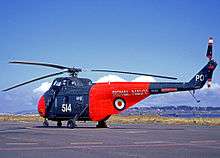
On 23 June 1967, the squadron reformed with the new primary task of anti-submarine warfare (ASW) Fleet Requirements Unit, in addition to the Portland SAR duty. Nine Whirlwind HAS.7 were used by the Squadron at this time. The Westland Wessex was introduced in 1969 with the Mk 1. This marked the beginning of a long association of the aircraft with the squadron. By 1970, the ASW role had been passed on to 737 Naval Air Squadron, making SAR 771's primary role, a role that has remained to the present day.
The Squadron moved to RNAS Culdrose in September 1974. Six of its Wessex aircraft were left at RNAS Portland, to form the basis of 772 Naval Air Squadron. The Wessex HAS.1 was replaced by the twin turbine-powered Wessex HU.5 in 1979, when it was involved with the 1979 Fastnet race rescues. During the Falklands Conflict all of 771 aircraft were taken for troop transport roles, some went to 722 Naval Air Squadron, but the majority reformed 847 Naval Air Squadron and 848 Naval Air Squadron along with some of 771 NASs aircrew. The remaining crew went either to their old aircraft type, or to new roles in the Lynx or Wasp fleets. Two Wessex Mk.5 from Wroughton were used in August 1982 to form the backbone of 771 NAS as it took the SAR commitment back from the RAF. In January 1983 the Squadron once again operated mixed fleets of rotary and fixed wing aircraft as it absorbed the Station Flight, taking ownership of two Chipmunks and 2 Sea Devons. It operated these until the end of 1989 when the Sea Devon was withdrawn from service. In 1985 the Squadron absorbed 707 Naval Air Squadron's Wessex helicopters when 771 NAS took over Commando Helicopter Training. The Wessex were replaced by Westland Sea King HAS.5s, converted to HAR.5s, in October 1987 as the Squadron assumed a long range, day/night and all weather SAR capability. In July 2001, 771 Squadron assumed the responsibility for Advanced and Operational Flying Training for anti-submarine warfare (ASW) pilots and Observers, as well as the residual Sea King HAS.5 & HAS.6 Pilot Conversion and Refresher Courses.
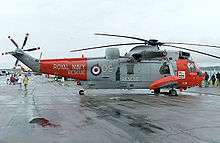
In its final years the Squadron operated the Sea King HAR.5 in the grey and red colours, with nine permanently stationed at RNAS Culdrose. 771's sister unit, Gannet Flight operates 3 HAR.5s performing a similar role from HMS Gannet on Prestwick Airport. 771's primary role was one of military Search and Rescue, with secondary roles in civilian Search and Rescue, Pilot and Observer refresher training, utility and liaison and ab-initio Pilot Conversion and operational training. To perform these roles, one of the helicopters was on 15 minutes notice to fly during the day, and 45 minutes during the night, with a duty crew on call for 24 hours. This duty was maintained for 365 days of the year, with a second standby aircraft ready to assist should the emergency have demanded it.
It stopped rescue duties on 1 January 2016 and was decommissioned on 22 March 2016. The squadron was responsible for saving over 15,000 lives on more than 9,000 missions.[3][4]
Ace of Clubs
771s Helicopters feature the unofficial Ace of Clubs Squadron Logo. The origin of this logo is unclear, but it is widely believed to follow a similar pedigree as the Royal Navy Historic Flight Hawker Sea Hawk, wearing 806 NAS's Ace of Diamonds logo. Shortly after the Second World War Squadrons of the Fleet Air Arm often had an in-house display team. Each of the display aircraft were painted with identification marks. Playing card suits were chosen by some Squadrons as they were a neat identification that allows clear hierarchy; the Squadron Commanding Officer would take the Ace card, the XO the King and so on until each aircraft had a value relating to the seniority in the Squadron/display team of that pilot. Today 771 does not assign an aircraft to each pilot, instead operating a pool of aircraft allowing each pilot to fly any helicopter. It was chosen that only the Ace of Clubs would be painted on each of the helicopters in the Squadrons fleet.
Rescues
771 NAS is one of the busiest SAR units in the UK being called out an average of 220 times per year. With the limitations in civilian flight rules for the Cornwall Air Ambulance pilots 771 is also often called upon to perform patient and hospital transfers throughout the West Country. These are typically when the Air Ambulance is engaged in other duties, in poor weather, at night or where no suitable landing place is close by, allowing the Sea King to utilise its winch. Individual honours have included 4 George Medals, 3 Air Force Crosses, 6 Queens Gallantry Medals, and 14 Queen's Commendation for Bravery awards. Some of the more memorable rescues have been:
- 1978 – Ben Asdale, Air Force Cross awarded to Lt AJM Hogg RN, and Lt Cdr MJ Norman RN[5]
- 1979 – Fastnet Race[6]
- 1985 – Fastnet Race, George Medal awarded to the Rescue Diver; POACMN L Slater[7] for his rescue of Simon Le Bon and 19 other survivors from the Yacht Drum
- 1985 – Yacht Master Cube
- 1989 – MV Secil Japan,[8] Air Force Medal awarded to the Rescue Diver CPOACMN JPR Grinney[9]
- 1989 – MV Murree,[10] George Medal awarded to each of the 2 Rescue Divers; POACMN DS Wallace, POACMN SW Wright [11]
- 1992 – Boyd Trophy won for night rescue of five crew from yacht Sine Seorra off Guernsey, Air Force Medal awarded to LA I Chambers[12]
- 2004 – Boyd Trophy won for Boscastle Flood rescues,[13] Air Force Cross awarded to Lt Cdr MJ Ford RN[14]
- 2005 – Boyd Trophy won for the recovery of critically ill crewman from fishing vessel 240 miles off coast in gale-force winds and very poor visibility
- 2007 – MSC Napoli, PO J O'Donnel awarded Queen's Gallantry Medal
- 2008 – Pesca del Verdes, CPOACMN D Rigg awarded Queen's Gallantry Medal[15]
- 2009 – Fishing Vessel Trevessa, PO D Lacy awarded Queen's Gallantry Medal[16]
- 2011 – Yacht Andriette, Sgt A Russell RM awarded George Medal for his role in the rescue[17]
RN SAR 60
As one of only two presently commissioned units of the ten that have operated in the dedicated Royal Navy Search and Rescue role, 771 NAS are a core part of the year-long celebration to recognise 60 years of RN Helicopter Search and Rescue. Events are taking place throughout the country and media all year, with the RN SAR Force raising £60,000 for charity.
Aircraft Operated by 771 NAS
There are 68 different marks of aircraft known to have been operated by 771 NAS.
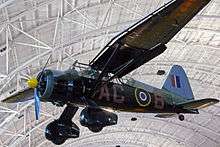
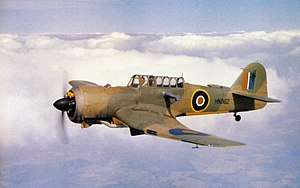

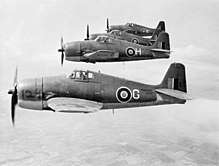

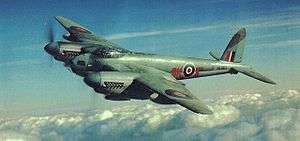

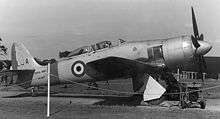

.jpg)
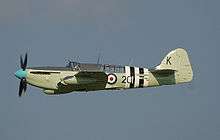



| Aircraft Equipment | Entered Service | Left Service |
|---|---|---|
| Swordfish | May 1939 | Apr 1945 |
| Henley III | Oct 1939 | Aug 1943 |
| Walrus I | Nov 1939 | Feb 1940 |
| Skua II | Apr 1940 | Apr 1943 |
| Roc I | Apr 1940 | May 1944 |
| Albacore I | Nov 1941 | ? |
| Blenheim I | Apr 1941 | Jun 1943 |
| Blenheim IV | Apr 1944 | May 1945 |
| Sea Gladiator | Dec 1941 | Jun 1944 |
| Maryland | Oct 1940 | Sep 1944 |
| Walrus | Mar 1944 | Jun 1944 |
| Defiant TT.1 | Jun 1942 | Aug 1943 |
| Chesapeake I | May 1942 | Apr 1944 |
| Proctor Ia | Aug 1942 | Oct 1943 |
| Lysander TT.III | Jul 1943 | Dec 1943 |
| Martinet TT.I | Aug 1943 | Oct 1951 |
| Havoc I | Dec 1942 | Sep 1944 |
| Boston II | Nov 1943 | Aug 1944 |
| Boston III | Feb 1944 | Aug 1944 |
| Hurricane FB.IIc | May 1944 | Apr 1945 |
| Sea Otter | Apr 1944 | Aug 1949 |
| Corsair II | Sep 1944 | Apr 1945 |
| Corsair III | Dec 1944 | Sep 1945 |
| Wildcat IV | Jul 1945 | Nov 1945 |
| Wildcat V | Nov 1945 | Mar 1946 |
| Wildcat VI | Oct 1945 | Mar 1946 |
| Oxford I | Mar 1946 | ? |
| Hellcat I | Sep 1945 | ? |
| Hoverfly I | Feb 1945 | May 1947 |
| Hoverfly II | Dec 1945 | May 1947 |
| Seafire III | Mar 1946 | Jan 1947 |
| Seafire F.15 | Nov 1946 | Jan 1951 |
| Seafire F.45 | Dec 1947 | Sep 1950 |
| Seafire F.46 | May 1947 | Dec 1947 |
| Anson I | Apr 1947 | Aug 1955 |
| Harvard T.2B | Jan 1948 | ? |
| Mosquito FB.6 | Jul 1950 | Apr 1952 |
| Mosquito PR.16 | Dec 1948 | Aug 1952 |
| Mosquito B.25 | Aug 1945 | May 1947 |
| Sea Mosquito TR.33 | May 1947 | Mar 1950 |
| Mosquito PR.34 | Nov 1948 | Jan 1950 |
| Sea Mosquito TR.37 | Dec 1948 | Jul 1949 |
| Mosquito TT.39 | Jan 1950 | Jan 1952 |
| Sea Hornet FR.20 | May 1950 | Jun 1950 |
| Sea Hornet NF.21 | Jan 1950 | Oct 1952 |
| Sea Fury T.20 | Jul 1950 | Dec 1950 |
| Meteor T.7 | May 1950 | Mar 1955 |
| Sea Vampire F.20 | Mar 1952 | Aug 1955 |
| Sea Vampire F.21 | Jan 1951 | Sep 1951 |
| Sturgeon TT.2 | Sep 1950 | Nov 1952 |
| Firefly FR.1 | Jan 1950 | Jul 1955 |
| Firefly T.1 | Jul 1950 | ? |
| Firefly T.2 | Jul 1950 | Aug 1952 |
| Firefly TT.4 | Nov 1951 | Aug 1955 |
| Firefly TT.5 | Jun 1952 | ? |
| Firefly AS.6 | Oct 1950 | Dec 1953 |
| Dragonfly HR.5 | Jul 1961 | Oct 1963 |
| Wasp P-531 O/N | Jul 1961 | Dec 1964 |
| Wasp HAS.1 | Nov 1963 | Dec 1964 |
| Whirlwind HAR.1 | Jul 1961 | Jul 1961 |
| Whirlwind HAR.3 | Oct 1961 | Mar 1964 |
| Whirlwind HAS.7 | Aug 1962 | Jan 1965 |
| Whirlwind HAS.7 (2nd service period) | Jun 1967 | Jan 1970 |
| Whirlwind HAS.22 | Jul 1961 | Nov 1961 |
| Wessex HAS.1 | Dec 1963 | Dec 1963 |
| Wessex HAS.1(2nd service period) | Dec 1969 | Jul 1979 |
| Wessex HU.5 | Mar 1979 | Mar 1988 |
| Chipmunk T.10 | Jan 1983 | Mar 1993 |
| Sea Devon C.20 | Jan 1983 | Dec 1989 |
| Sea King HAR.5 | Oct 1987 | Mar 2016 |
Commanding officers
| Rank | Name | Date |
|---|---|---|
| Lt Cdr | KW Beard RN | 24 May 1939 |
| Lt Cdr | FEC Judd RN | 13 Sep 1940 |
| Maj | AR Burch RM | 15 Jan 1941 |
| Lt Cdr (A) | NE Goddard DSC RNVR | 15 Oct 1941 |
| Lt Cdr (A) | HT Molyneaux RNVR | 4 May 1942 |
| Lt Cdr (A) | W Dobson RN | 13 Feb 1944 |
| Lt Cdr( A) | CC Burke RNZNVR | 11 Apr 1945 |
| Lt Cdr | GMT Osborn DSO DSC RN | 24 Oct 1945 |
| Lt Cdr | CR Bateman RN | 23 Feb 1948 |
| Lt Cdr (A) | RWM Walsh RN | 7 Jan 1949 |
| Lt Cdr | JG Baldwin DSC RN | 18 Nov 1949 |
| Lt Cdr | JA Welpy RN | 19 Dec 1950 |
| Lt Cdr | MW Rudorf DSC RN | 5 May 1952 |
| Lt Cdr | Pridham-Wippell RN | 15 Sep 1952 |
| Lt Cdr | BE Bullivant RN | 3 Jun 1953 |
| Lt Cdr | RW Turral RN | 28 Mar 1955 |
| squadron disbanded | 17 Aug 1955 | |
| Lt Cdr | AIR Shaw MBE RN | 11 Jul 1961 |
| Lt Cdr | RV Woodward RN | 23 Mar 1962 |
| Lt Cdr | JRJ Rutherford RN | 28 Mar 1964 |
| squadron disbanded | 1 Dec 1964 | |
| Lt Cdr | JT Rawlins MBE RN | 23 Jun 1967 |
| Lt Cdr | R McLean MVO RN | 14 Aug 1968 |
| Lt Cdr | I Lachlan RN | 20 May 1970 |
| Lt Cdr | CL MacGregor RN | 4 Oct 1971 |
| Lt Cdr | RN Woodward RN | 5 Sep 1974 |
| Lt Cdr | CP West RN | 16 Sep 1974 |
| Lt Cdr | KJMcK Ayres RN | 16 Jun 1976 |
| Lt Cdr | R Mortimer RN | 10 May 1978 |
| Lt Cdr | PA Fish RN | 28 Sep 1979 |
| Lt Cdr | NB Shaw RN | 23 Feb 1981 |
| Lt Cdr | GRK Gadsden RN | 20 Sep 1982 |
| Lt Cdr | EK Bramall RN | 10 Jan 1983 |
| Lt Cdr | RHS Everall RN | 8 Apr 1983 |
| Lt Cdr | DR George RN | 15 Oct 1985 |
| Lt Cdr | MJ Lawrence RN | 18 Dec 1988 |
| Lt Cdr | IS Dominey RN | 28 Jul 1989 |
| Lt Cdr | SD Pendrich AFC RN | 15 Mar 1991 |
| Lt Cdr | L Matthews RN | 23 Jul 1993 |
| Lt Cdr | GBM Milton RN | 5 Mar 1996 |
| Lt Cdr | PC Richings RN | 19 May 1998 |
| Lt Cdr | D Whitehead RN | 7 Jul 2000 |
| Lt Cdr | DA Cunningham RN | 6 Aug 2002 |
| Lt Cdr | JC Barnbrook RN | 21 Jul 2004 |
| Lt Cdr | CA Godwin RN | 24 Jul 2006 |
| Lt Cdr | GJ Finn RN | 27 Jul 2008 |
| Lt Cdr | CP Canning RN | 30 Mar 2010 |
| Lt Cdr | MP Shepherd RN | 29 Mar 2012 |
| Cdr | MP Shepherd RN | 30 Jun 2013 |
| Lt Cdr | ST Armstrong RN | 4 Apr 2014 |
| Lt Cdr | RT Calhaem RN | 12 Jan 2015 |
References
- ↑ http://www.london-gazette.co.uk/issues/35275/supplements/5357/page.pdf
- 1 2 http://www.london-gazette.co.uk/issues/35275/supplements/5358/page.pdf
- ↑ http://www.plymouthherald.co.uk/Final-shift-Cornwall-based-rescue-crew-771-Naval/story-28445365-detail/story.html
- ↑ Graeme, W B. "Final ceremony disbands navy 771 search and rescue squadron at RNAS Culdrose Helston". The Cornishman. Retrieved 22 March 2016.
- ↑ "Viewing Page 11475 of Issue 47950". London-gazette.co.uk. 1979-09-10. Retrieved 2012-07-09.
- ↑ http://www.blur.se/images/fastnet-race-inquiry.pdf
- ↑ "Viewing Page 3447 of Issue 50453". London-gazette.co.uk. 1986-03-10. Retrieved 2012-07-09.
- ↑ http://www.london-gazette.co.uk/issues/52024/pages/969/page.pdf
- ↑ "Viewing Page 969 of Issue 52024". London-gazette.co.uk. 1990-01-22. Retrieved 2012-07-09.
- ↑ "MURREE – IMO 8000161 – ShipSpotting.com – Ship Photos and Ship Tracker". ShipSpotting.com. Retrieved 2012-07-09.
- ↑ http://www.london-gazette.co.uk/issues/52218/supplements/12275/page.pdf
- ↑ http://www.london-gazette.co.uk/issues/53255/supplements/5191/page.pdf
- ↑ "UK | England | Cornwall | Bravery awards for flood heroes". BBC News. 2005-09-27. Retrieved 2012-07-09.
- ↑ "Page 3379, Supplement 57588, 18 March 2005, London Gazette". London-gazette.co.uk. 2005-03-18. Retrieved 2015-04-12.
- ↑ "Rescue winchman gets royal award". BBC News. 14 December 2009.
- ↑ http://www.thisiscornwall.co.uk/Fishermen-rescued-trawler-blaze/story-11393293-detail/story.html#axzz2RCNfPJ8U
- ↑ Williams, Olivia (25 March 2013). "Royal Marine helicopter winchman who rescued two men from a stranded yacht in 'worst weather he's ever seen' is awarded the George Medal". Daily Mail. London.